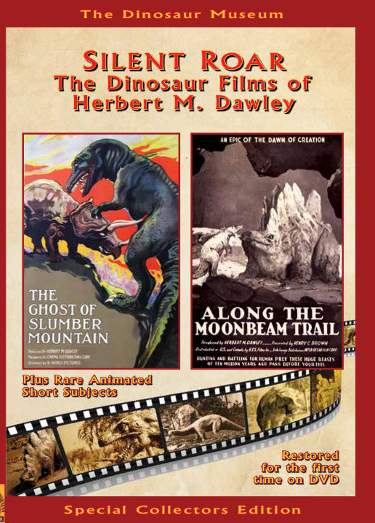Terry Huud: Scoring the Stop-Motion Art of Illusion
By Randall D. Larson
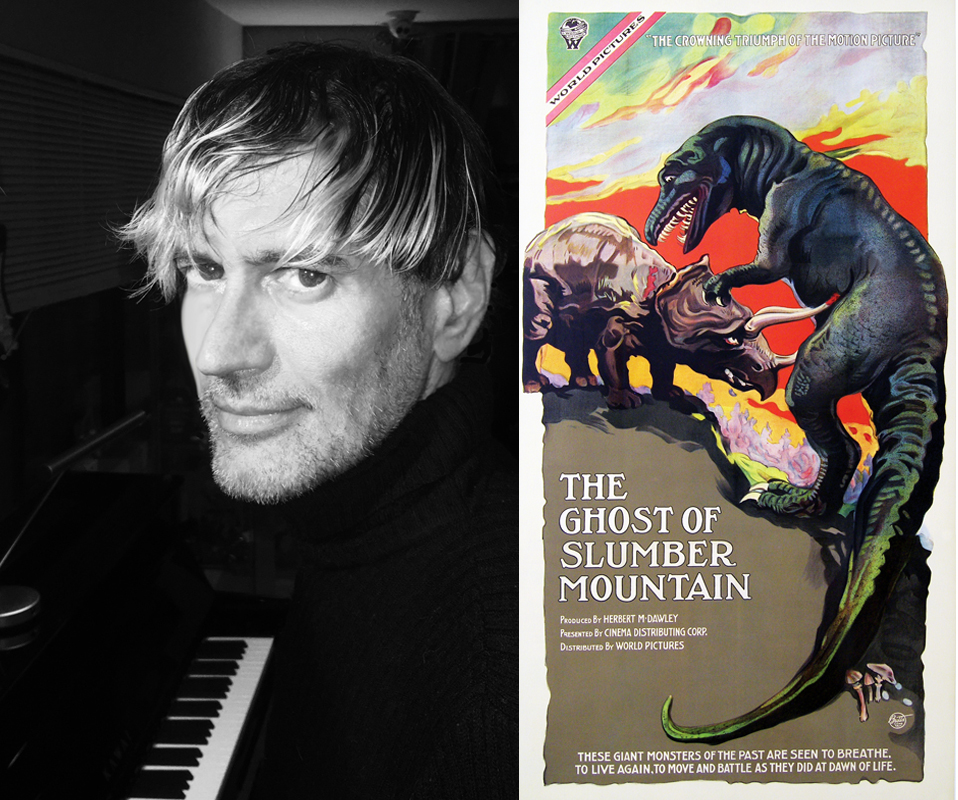
Composer Terry Michael Huud, a classically trained film composer who also studied jazz composition and arranging, was born in Texas and raised in Pennsylvania. After scoring his own student films in college, Terry made his first mark in music when he was asked to score THE ART OF ILLUSION, a video documentary on movie special effects which has since become a permanent addition to the Smithsonian archives. Terry went on to score the 1994 MOVIE MAGIC series on the Discovery Channel and Jean-Michelle Cousteau’s 1996 STORIES OF THE SEA series on Discovery International, not to mention all manner of low-budget horror films, including CHILDREN OF THE CORN 666 ISAAC’S RETURN (1999), THE TOOLBOX MURDERS 2 (2013), and DARK AWAKENING (2014, in collaboration with Michael Huey – see my interview with them here).
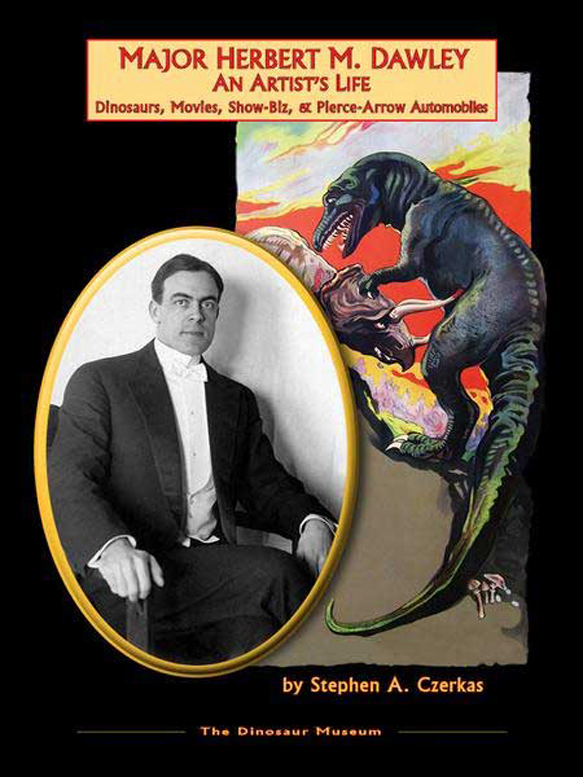 The Dawley Project
The Dawley Project
But Huud’s interest in special effects has come full circle with his recent involvement with what’s become known as The Dawley Project – a book and film archive spearheaded by Stephen A. Czerkas to honor silent movie stop-motion animator and soldier Major Herbert M. Dawley (1880-1970). Huud was invited to score two fully restored silent films of Dawley’s as well as a series of animated shorts highlighted in a special video, Silent Roar: The Dinosaur Films of Herbert M. Dawley, that accompanies Czerkas’s book about the silent movie maker.
Herbert M. Dawley & Stephen A. Czerkas
In the mid 19-teens, Willis O’Brien and Herbert M. Dawley were partners in filmmaking, both starring in, and jointly creating the special visual effects for, the 1918 short film THE GHOST OF SLUMBER MOUNTAIN, which would prove to be hugely influential on what would become the art and science of stop-motion animation, of which O’Brien would later become an undisputed master through his work on 1925’s THE LOST WORLD and the legendary 1933 KING KONG. In the process, however, Dawley was left behind, especially after it was revealed that he removed O’Brien’s credit from their joint venture, THE GHOST OF SLUMBER MOUNTAIN. Or was that really how it happened?

Enter Stephen Czerkas, a young artist, sculptor, paleontologist, and filmmaker whose own efforts in stop-motion animation (particular on the 1977 feature, PLANET OF DINOSAURS) were notable on their own right. Czerkas spent more than a decade studying Dawley’s life and career, pouring through archival articles, interviews, and the man’s own scrapbooks and diaries. When Stephen passed away from cancer in 2015, his widow Sylvia took the project over. “I promised him that I would complete the work for him,” Sylvia said. Working with designer, filmmaker, and special visual effects artist Ernest Farino, they used Stephen’s chapter concepts and text, then completed the finished appearance of the book. “I was the editor and wrote the captions, and Ernie did the design and layout of the book,” Sylvia explained.

Silent Roar: The DVD
While Stephen was gathering research for his book, he also worked with the Academy of Motion Picture Arts & Sciences Archives to compile their collection of Dawley’s short “Silhouette” films – a series of short silent films animated on glass that he had made with Tony Sarg in 1921 – into a DVD that would accompany the book. The DVD would also include restored versions of both THE GHOST OF SLUMBER MOUNTAIN (1918) and Dawley’s formerly “lost” fantasy film, ALONG THE MOONBEAM TRAIL (1921), which also featured extensive animated visuals – and was the first film to show actors and stop-motion creatures together in the same frame (GHOST OF SLUMBER MOUNTAIN had used an editorial approach – cutting between actors and models in different frames). “Feature footage of GHOST and MOONBEAM was obtained from several different sources, both domestic and overseas, then edited together and meticulously restored by Steven Austin,” said Sylvia Czerkas.
She arranged to have special musical scores written for both films and each of the Silhouettes shorts, along with an audio commentary provided by filmmaker and special visual effects designer and historian Mark Wolf, which is drawn from Stephen Czerkas’s research (The text of Wolf’s commentaries is also included in the book’s appendix). The result is an outstanding historical reference on the early days of stop-motion animation and a thorough look at the part played in it by Major Herbert M. Dawley that both sets the factual record straight without diminishing the genius of Willis O’Brien and his own work in THE LOST WORLD, KING KONG, SON OF KONG, MIGHTY JOE YOUNG, and others. Furthermore, having such significantly restored versions of the historical important films made by Dawley (the disc is included with the hardcover book but is also available on its own in a standard DVD case) adds to one’s appreciation of how the pioneering stop-motion animation process was first employed.
Herbert Dawley and Terry Huud
And here’s where composer Terry Huud fits into the picture, painting musical sound onto Dawley’s silent visual illusions. Terry was hired by Sylvia to compose original scores for both films and also for each of the twelve restored Silhouettes shorts. Terry met with co-producer/editor Steven Austin at the latter’s studio and had some initial discussions about how the music might be approached. A simple piano score built around recurring motifs was suggested, but after thinking more about how the music could best serve the films, Terry felt a broader, more harmonic orchestral sound with various instrumental themes would provide a more engaging score. Terry’s music really enlivens these remarkable vintage animations; the music is full of energy and vigor and evocative nuances that capture moments of action very effectively. In our interview that follows, Terry describes in detail his approach to scoring these vintage fantasy films and bringing life to the visual magic of nearly one hundred years in cinema’s past.
[For more information on the book and video, see: http://dinosaur-museum.org/]
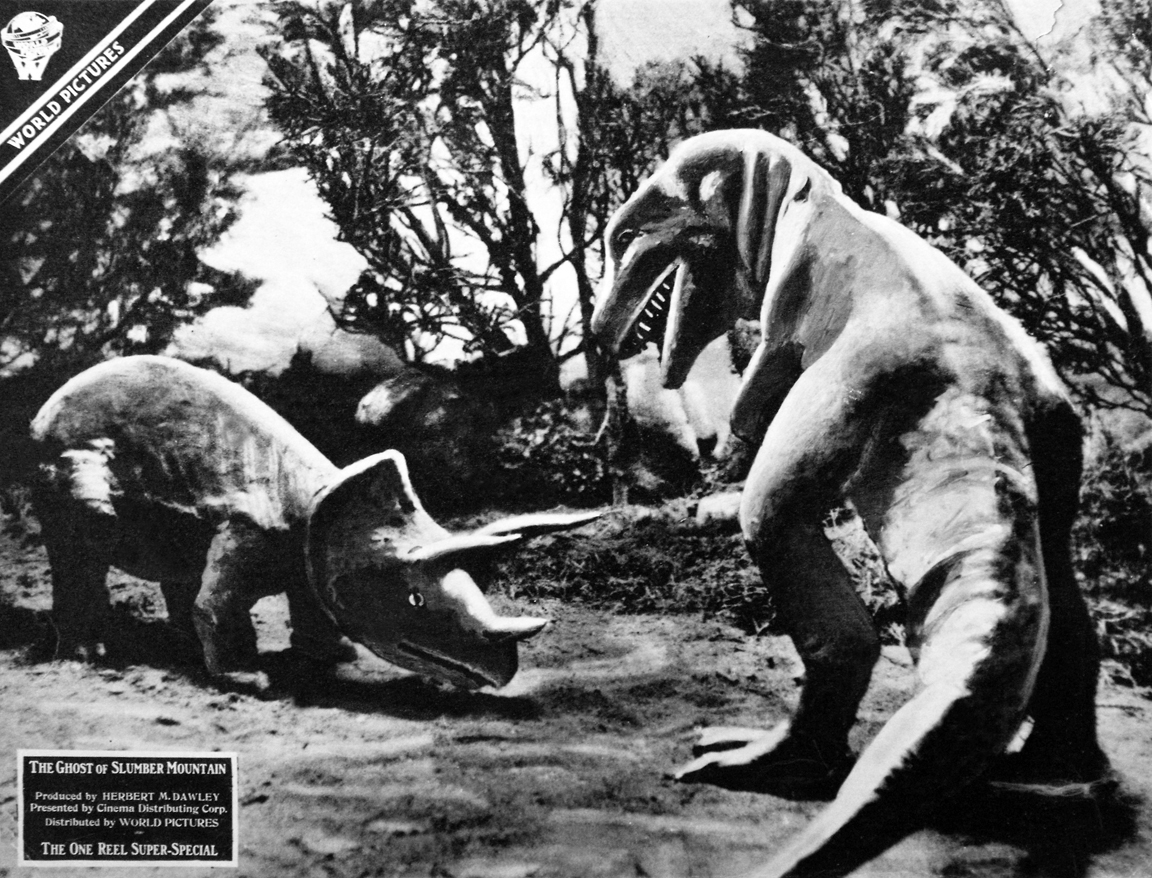
Interview with Terry Huud
Q: How did you become involved with this Herbert M. Dawley project?
Terry Huud: A good friend, Mark Wolf contacted me. He is a stop motion animation buff and had heard about the project and that the creatives were looking for a composer to do (at that time) a simple piano score. Mark is also a stop-motion animation historian who also happens to have a marvelous voice, so it is his voice that we hear on the commentary tracks for THE GHOST OF SLUMBER MOUNTAIN and ALONG THE MOONBEAM TRAIL.
Q: Were you familiar with Dawley and his pioneering work in stop-motion animation prior to becoming involved in this project?
Terry Huud: I really was not. This project was very educational for me. I am a buff of very early films and stop motion animation myself so this was a dream project for me for those reasons and a few others including the chance to work with some really wonderfully talented people.
Q: How closely did you work with Sylvia Czerkas and co-producer/editor Steven Austin in establishing the right musical tone and scope for these films?
Terry Huud: I was left off to my own ways for the most part. I was a tad disoriented in the beginning because in a way when no one lays down any musical guidelines you’re suddenly faced with dialing in a style on your own. I started to think all kinds of crazy abstract types of ways of scoring the Silhouettes since they are bit ‘off beat’ but ultimately I took a more conservative route.
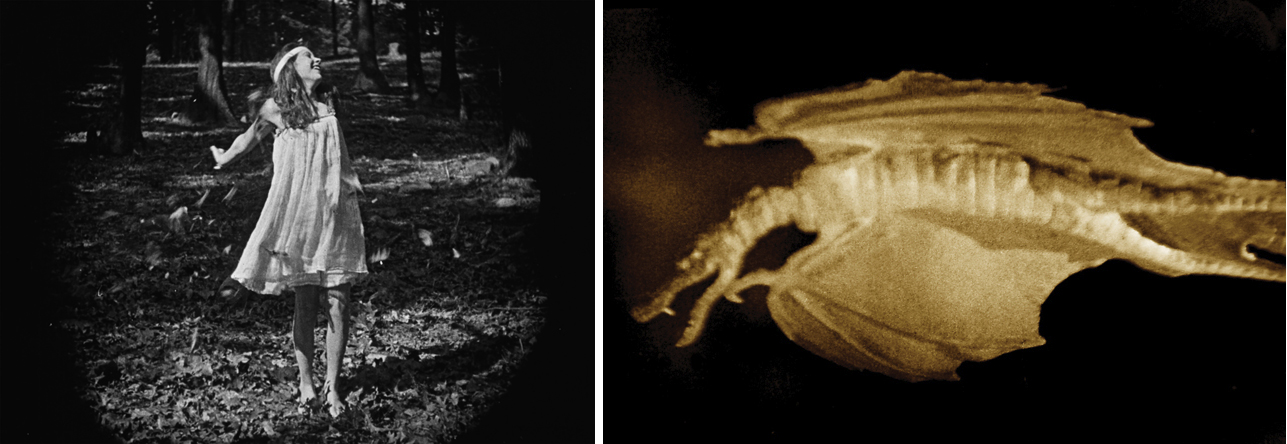
Q: As silent films, what challenges did you face in essentially scoring them wall-to-wall?
Terry Huud: It is interesting. I am a firm believer in silence being just as important if not more important than a musical soundtrack to a film. It is just so powerful when in films the music just stops. It draws attention to a scene and really works. It gives the scene more gravitas. But I’ve noticed (after scoring dozens of silents) that stopping the music to a silent picture for more than a second or two just doesn’t seem to work!
Q: Was the music performed with live instruments or did you use a digital orchestra?
Terry Huud: The whole project started out with their wanting a simple piano score but I thought the film really needed something bigger. We couldn’t afford any live instruments on it so I went completely with sampled instruments. The strings were all Spitfire strings and the winds and brass were East West. East West has such lovely horns; the French horn in particular has that majestic Aaron Copland feel. The winds have such a lovely timbre as well and so much life to them.
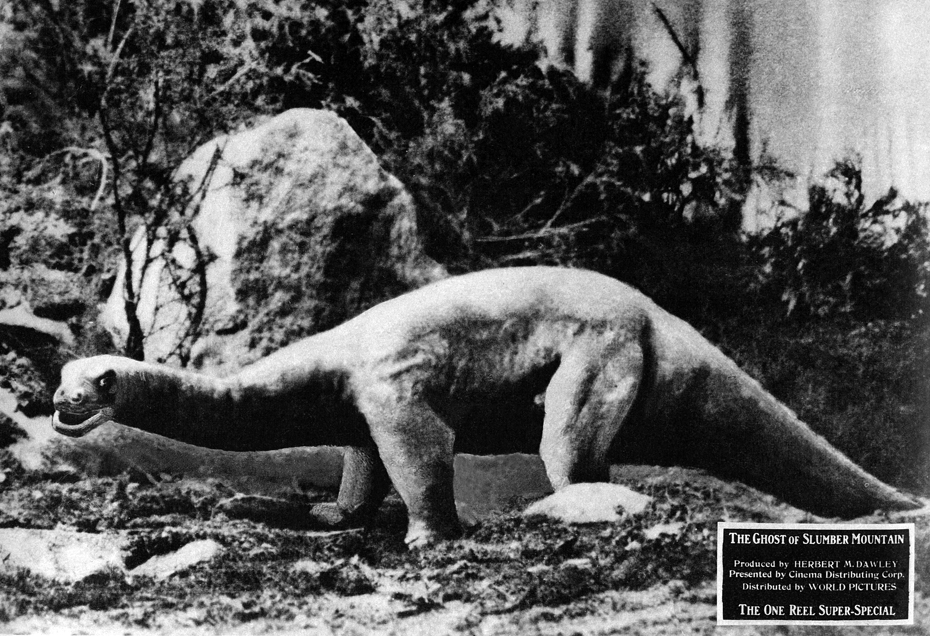
Q: What were your initial musical ideas when formulating the score for THE GHOST OF SLUMBER MOUNTAIN?
Terry Huud: I wanted a piece of Americana – Dawley captures so much of that in his films, it just penetrates every frame. I wanted to start off as an adventure and as we get pulled into the woods and into the world of “Mad Dick” I wanted to go more mysterious but never leaving the adventure out of it.
Q: GHOST possesses an engaging Americana-type feel for its contemporary scenes, a bit of jaunty adventure music as the storytelling begins, and some modernistic flavoring when the dinosaurs are spotted. How would you describe the musical arc of your score and how particular elements of the story inspired you?
Terry Huud: My score owes a lot to “Appalachian Spring” and Aaron Copland’s music. I used a lot of quartal and quintal harmonies but I hope I succeeded at blending the Coplandish feel with a more modern feel without the contrast being too great. I needed a theme for “Mad Dick” since he plays throughout. That was my opportunity to get a bit loose and avant-garde. “Mad Dick” really fascinated me. I thought that was a great chance to get a little crazy and have some wild flute runs to show he was a loose cannon. But we are still drawn to him and we needed to trust him a little so I always wanted the audience guessing at where “Mad Dick” would ultimately take us.
I loved the story. You know when I was a kid we had this legend in our neighborhood of a “Mad Dick” kind of personality. I’ll bet every neighborhood has those legends. It’s what leads our imaginations down the adventure trail. Dawley was so good at taping into our childhood fantasies of our yearning to go on a great adventure of some kind.
Q: Your 13-minute score for ALONG THE MOONBEAM TRAIL favors an especially rich thematic structure for its many imaginative vignettes.
Terry Huud: This was my favorite of the two mini ‘features.’ I think because of its magical qualities. GHOST was an adventure but MOONBEAM is a magical adventure! That inspired me. My wish is that all of the footage would be found to the end of this film in order to have a more solid ‘complete’ feel to it. But Ernie Farino, Sylvia Czerkas, and Steve Austin, the editor, really did a great job of filling in the blanks with subtitles.
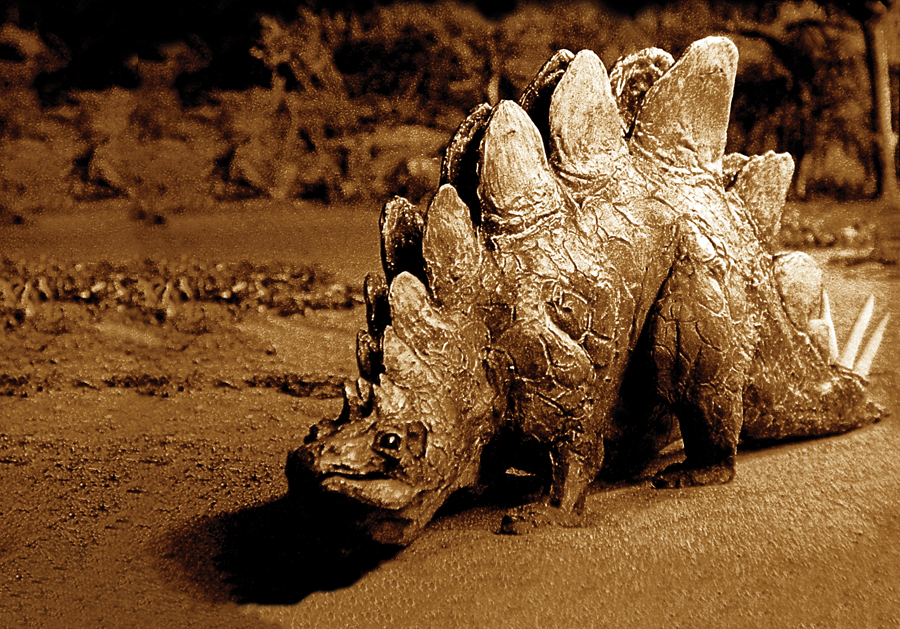
Q: What was your process in mapping out the MOONBEAM score and hitting various visual elements, musically?
Terry Huud: Queen Mab is really the instigator into bringing the boys and their dad on an adventure they’ll never forget, so I knew I had to start with some sort of mischievous, impish theme for her. Then I just looked for recurring elements that might need thematic support. The God Mars is a traffic controller in our universe of fantasy so he gets a heroic motif. The Pterodactyl/Goblin that keeps appearing and terrorizing our protagonists had to get a theme of his own, albeit a short one. But the film is magical, mysterious, and whimsical and I wanted to keep that vibe going.
As we end on our trio and their encounters with the dinosaurs in the ‘Land of the Lost,’ I knew I wanted something heavy and percussive to support them, saving the big stuff and brass for our most-feared, the T-Rex. And then of course we end with Queen Mab as she’s summoned to bring the family home, so our magical elements briefly return to conclude our story.

Q: Your music for the short “Silhouettes” shorts enabled a variety of musical styles and flavors. How did you approach these and provide mini-scores for these films?
Terry Huud: I kept leaning towards making each and every one totally different than the others, but I did feel they needed to be cohesive, so I kept things relatively similar. I felt that Dawley did such a marvelous job at presenting so many unique moments (situational and historical) that those elements would be enough to bring some musical variety to everything. I did reach for some jazz in one short, as I felt it fit. In retrospect, I wouldn’t have minded doing another one or two in that jazz vein.
Q: What was most challenging for you about this project?
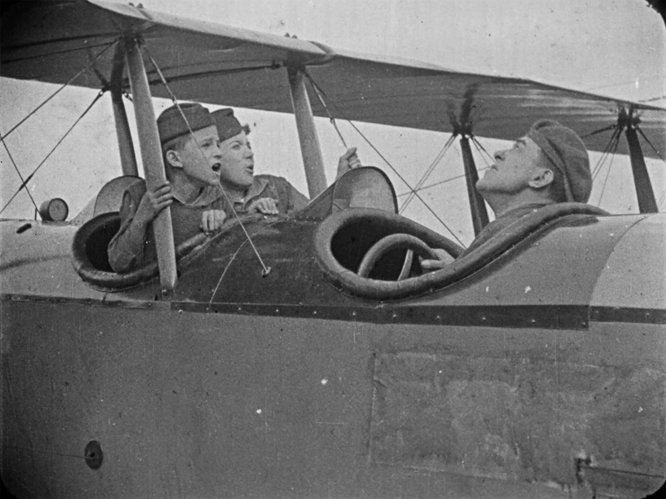
Terry Huud: Balancing the comedic with the serious for the Silhouettes. Dawley had an interesting sense of humor but I did not want to get too cartoony with everything. So I‘d be putting funny bits in, taking them out, and putting them in again, and so on. It was also always questionable about how much Foley to put into the musical score. Certain things, Foley-wise, really added a lot – like in ALONG THE MOONBEAM TRAIL by just putting in the sound of a biplane engine start up and takeoff, it was like, wow, that just nailed it. One can get carried away with the Foley, though – what to Foley, what to make more musical? That was a challenge. Sometimes, actual footsteps would work and other times pizzicato strings were best to represent those footfalls. There were also times that some of the characters in the Silhouettes were obviously ‘talking’ and that was a challenge trying to decide who should be heard and who should not. And what would they sound like??
Another example: you have this bee flying around in one of the Silhouettes and you’re wondering what this bee should sound like. Is it a funny bee? Should it sound real? Should I use a kazoo? Should I do nothing? Stuff like that. I tried assigning instruments to represent ‘voices’ and animals, insects, etc. though as much as possible, thus keeping it more ‘musical’, vs. sound design-ish. I tried to get into Dawley’s head and ‘feel’ for where he was going with stuff, but I couldn’t just pick up the phone or write him an email and ask. I hope he would approve of some of the decisions.
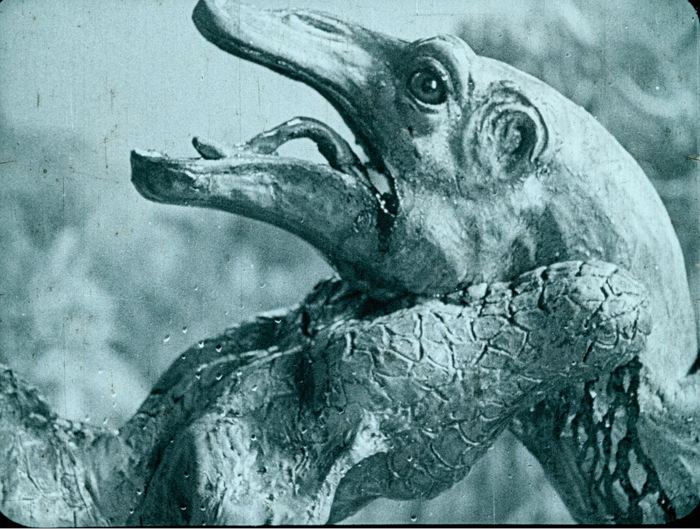
Q: What was most rewarding?
Terry Huud: Breathing some new life into films that have been revived and lovingly restored by a tremendously creative team. It is unbelievable the number of talent and the number of film technicians, restoration lab services, etc. that go into these projects. There are a lot of unsung heroes. Making these films accessible to a new generation is quite fulfilling and exciting.
Terry has created remastered suites of his music for THE GHOST OF SLUMBER MOUNTAIN, ALONG THE MOONBEAM TRAIL, and several of the “Silhouettes” films – these can be listened to at the website at http://terryhuud.com/work/ (scroll down to the specific film titles).
Special thanks to Sylvia Czerkas, Ernest Farino, Steven Austin, and Terry Huud for assisting with this interview and its presentation. Images courtesy of the filmmakers, © by The Dinosaur Museum.
In memory of Stephen Czerkas.

